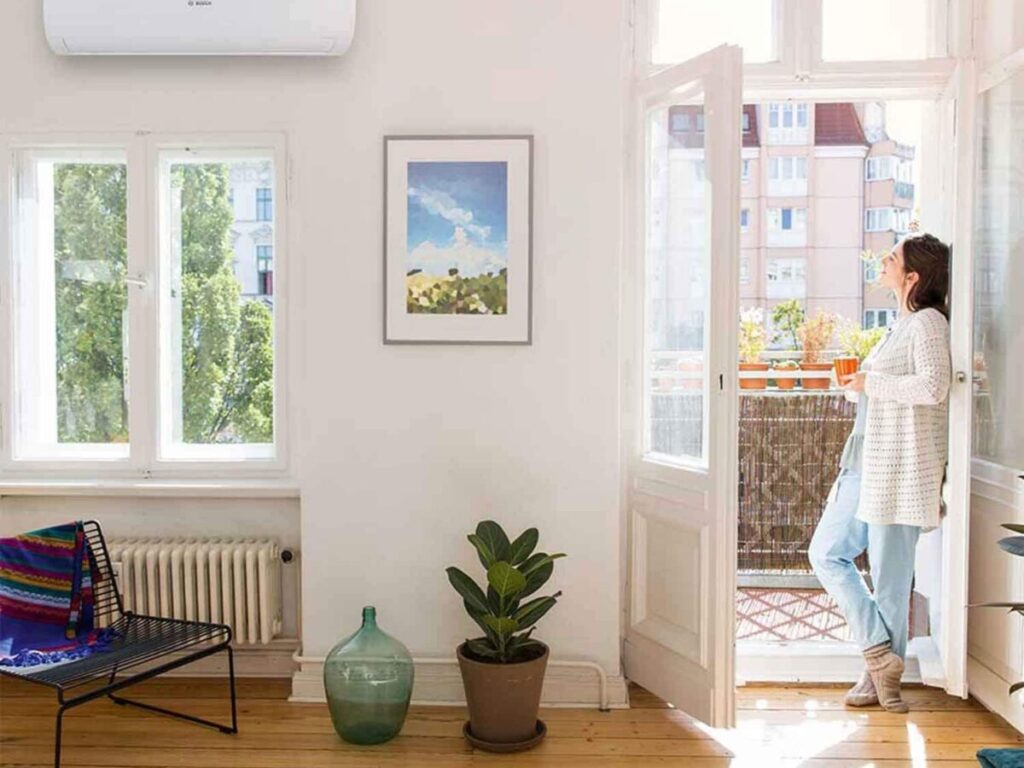Midsummer temperatures make sleeping (sleeping) a torture. It’s good to be able to cool the room down. Split devices and monoblocks make it possible. The Stiftung Warentest has tested five current devices.

In large parts of Germany, temperatures will again rise above 30 degrees this weekend. During the day this is not a problem for most people. In the outdoor pool, in another body of water or under the garden shower, you can cool down quickly. But it looks different at night. On tropical nights, when the temperature does not drop below 20 degrees, many find it difficult to sleep. Air conditioners can help. They are either mounted on the wall (split units) or simply placed on castors in the appropriate room (monoblocks). Stiftung Warentest has tested five such devices each – and has come to a clear conclusion .
The best cooling devices according to Stiftung Warentest (6/2021)
MONOBLOCKS IN THE TEST – ALL BASICALLY FAIL
The advantage of monoblocks is quickly explained: They can (usually) be used on the move, so they can be used in different rooms as required and quickly stowed back in the basement in autumn and winter. And they are significantly cheaper than split devices. They blow the heat out of the window through an exhaust hose. But are they really good too? Do they fulfill their intended purpose?
The Stiftung Warentest says: No! Because, of all things, in the “cooling” discipline, all five monoblocks put to the test by the testers in the current issue (6/2021) only received a “sufficient” rating. The problem: Due to its construction and function (negative pressure!), Warm air from outside also constantly flows into the room to be cooled. This reduces the cooling effect.
SPLIT UNITS ARE BETTER – BUT GOOD AIR CONDITIONING UNITS ARE OFTEN EXPENSIVE
Split units are better suited for cooling. They can do without an exhaust hose because they consist of an indoor and an outdoor unit. However, this makes the installation more complex. They must (!) Be installed by a refrigeration specialist. And in rental apartments, of course, this is only possible with the landlord’s okay. The advantage of split devices: They cool rooms faster and use less electricity. But good devices cost many times what a monoblock costs. If a monoblock is quickly purchased for 300 to 500 euros, a good split device can easily cost 2,500 euros – plus assembly costs.
Are you wondering who won the test? For the testers from Stiftung Warentest, the Daikin FTXJ35MW / RXJ35M cools best and achieved a “good” (2.1) in the final score. The Comfee MSAF5-12HRDN8 set provides a similarly good cooling performance. In the overall grade, however, it was only enough to get a “sufficient” (3.6), because environmental properties (sufficient) and handling (satisfactory) were less convincing.
BUY A MONOBLOCK OR SPLIT DEVICE?
For comparison: Daikin’s test winner only needed around six minutes to cool a test room. A De’Longhi mono device only reached the target temperature after 45 minutes. Even so, monoblocks can still be used for bedrooms and offices. That is when there are no large heat sources – such as large windows through which the sun can shine unhindered.
The best monoblocks according to Stiftung Warentest (06/2020 & 06/2021)
De’Longhi Pinguino PAC N 90 ECO Silent (satisfactory)
Midea Europe Comfee MPPH-09CRN7 (sufficient)
AEG ChillFlexPro AXP26U338CW (sufficient)
And what no one should underestimate: some monoblocks use a lot of electricity. For three out of five models, Stiftung Warentest shows costs of over 1,000 euros in 10 years; even more than 1,400 euros for a Koenic model. The Daikin split device costs only 376 euros.


